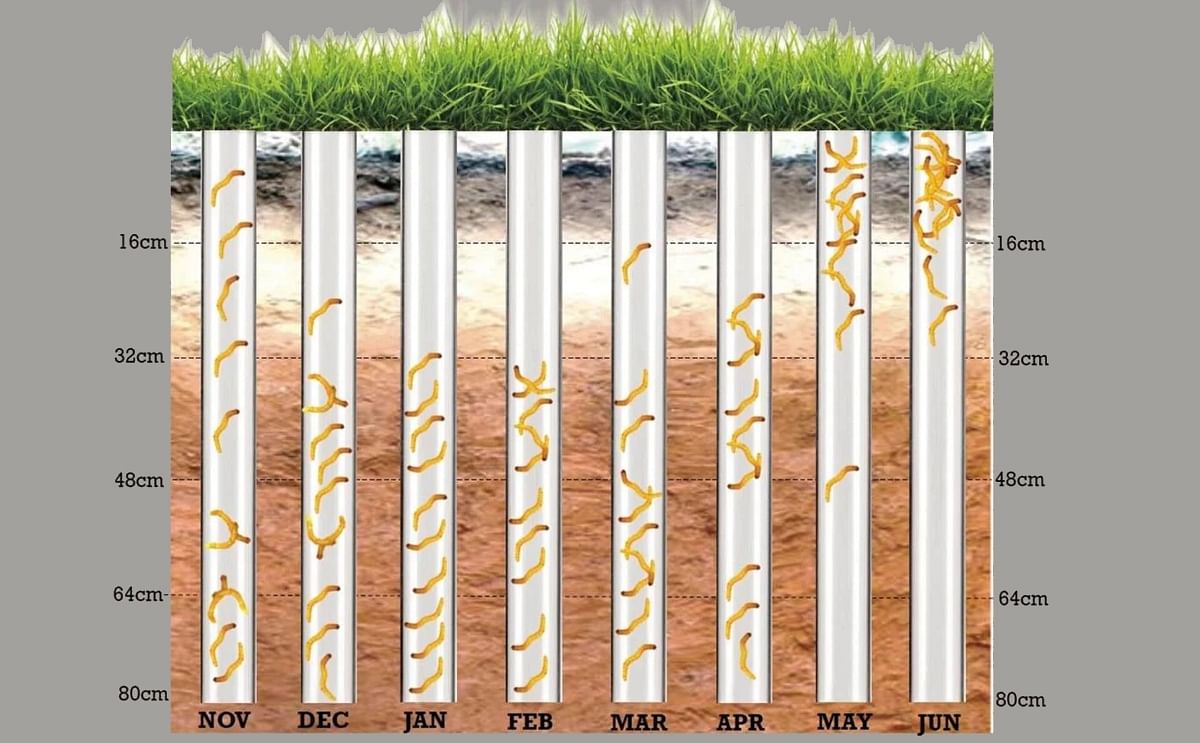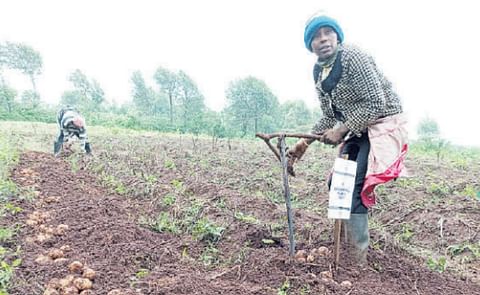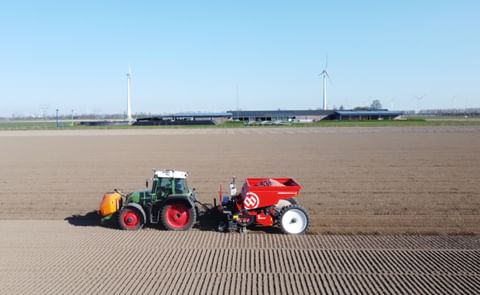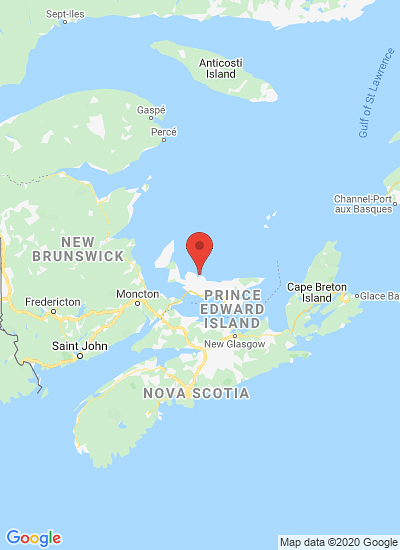Beyond Insecticide: How wireworm behaviour gives clues to managing their population

Wireworms overwinter just below the frost line, at least three feet underground.
Wireworms are a common potato plant predator, living in soil and feeding on roots. They are notoriously difficult to control, and populations are increasing in farm fields across Canada causing major economic losses to farmers each year.
Dr. Christine Noronha, a Charlottetown-based Entomologist with Agriculture and Agri-Food Canada (AAFC), wants to make wireworms squirm and even scram. For years, Dr. Noronha has been studying the behaviours of wireworms to see how they move around in soil and burrow in the winter.
Knowing these key behaviours have helped her team develop management strategies for farmers to reduce populations feeding on potato crops, beyond just spraying insecticide.
Christine Noronha, Research Scientist, Agriculture and Agri-Food Canada:
Buckwheat or brown mustard can act as a bio-fumigant, so planting these crops at least one or two seasons prior to planting potatoes will reduce wireworm populations. These crops can be mowed, incorporated into the soil, or harvested – all options will provide wireworm control. If harvested, they can be used as a secondary cash crop for farmers.
Dr. Noronha has also investigated how wireworms move in search of food sources and how deep they travel into the soil for warmth in the winter. This work, which took place at the AAFC Harrington Research Farm on Prince Edward Island, utilized underground vertical tubes filled with soil.
 She discovered that wireworms could travel long distances in search of potato roots and pinpointed how wireworms move throughout the year, including when they resurface, which is precisely the right time to monitor the population in the field.
She discovered that wireworms could travel long distances in search of potato roots and pinpointed how wireworms move throughout the year, including when they resurface, which is precisely the right time to monitor the population in the field.
Dr. Noronha recommends that the best time to bait for wireworms is in May and June, and from mid-September to mid-October. These periods are when the wireworms are most actively foraging for food.
In a recently concluded study to see how wireworms survive under sub-zero temperatures, Dr. Noronha placed wireworms in a freezing chamber at the Charlottetown Research and Development Centre. As it turns out, wireworms are resilient little pests.
On average, they can survive temperatures from -7 to -12 degrees Celsius. One wireworm even survived up to -20 degrees Celsius! Typically, soil temperatures on Prince Edward Island do not dip below -7 degrees Celsius, and that's in a very cold winter.
Even worse, wireworms spend the winter protected deep in the soil and can live without food for months. With winter temperatures on the rise, Dr. Noronha expects wireworm populations to remain high, so the more management tools available to farmers, the better.
In winter, many Canadians dream of milder temperatures. However, potato producers just might welcome colder weather if it means more successful wireworm control.
To help farmers in the fight against wireworms, Dr. Noronha and her team will be launching a series of presentation videos on different topics related to wireworm management including their behaviours, trapping, control methods, and more. Dr. Noronha hopes these digital learning guides will be available by the end of 2023.
Dr. Christine Noronha, a Charlottetown-based Entomologist with Agriculture and Agri-Food Canada (AAFC), wants to make wireworms squirm and even scram. For years, Dr. Noronha has been studying the behaviours of wireworms to see how they move around in soil and burrow in the winter.
Knowing these key behaviours have helped her team develop management strategies for farmers to reduce populations feeding on potato crops, beyond just spraying insecticide.
Christine Noronha, Research Scientist, Agriculture and Agri-Food Canada:
"Many insecticides we've studied are inefficient at controlling wireworm populations to reduce damage to potatoes, and farmers have requested more alternative management strategies that help suppress these pests."These strategies include spring plowing, the use of rotational crops, and finding the optimal timing of insecticide application and baiting. Dr. Noronha recommends not planting in a field that was in continuous sod for many years.
Buckwheat or brown mustard can act as a bio-fumigant, so planting these crops at least one or two seasons prior to planting potatoes will reduce wireworm populations. These crops can be mowed, incorporated into the soil, or harvested – all options will provide wireworm control. If harvested, they can be used as a secondary cash crop for farmers.
Dr. Noronha has also investigated how wireworms move in search of food sources and how deep they travel into the soil for warmth in the winter. This work, which took place at the AAFC Harrington Research Farm on Prince Edward Island, utilized underground vertical tubes filled with soil.

Dr. Christine Noronha removes one of the wireworm tubes from their test plot at the AAFC Harrington Research Farm.
Dr. Noronha recommends that the best time to bait for wireworms is in May and June, and from mid-September to mid-October. These periods are when the wireworms are most actively foraging for food.
In a recently concluded study to see how wireworms survive under sub-zero temperatures, Dr. Noronha placed wireworms in a freezing chamber at the Charlottetown Research and Development Centre. As it turns out, wireworms are resilient little pests.
On average, they can survive temperatures from -7 to -12 degrees Celsius. One wireworm even survived up to -20 degrees Celsius! Typically, soil temperatures on Prince Edward Island do not dip below -7 degrees Celsius, and that's in a very cold winter.
Even worse, wireworms spend the winter protected deep in the soil and can live without food for months. With winter temperatures on the rise, Dr. Noronha expects wireworm populations to remain high, so the more management tools available to farmers, the better.
In winter, many Canadians dream of milder temperatures. However, potato producers just might welcome colder weather if it means more successful wireworm control.
To help farmers in the fight against wireworms, Dr. Noronha and her team will be launching a series of presentation videos on different topics related to wireworm management including their behaviours, trapping, control methods, and more. Dr. Noronha hopes these digital learning guides will be available by the end of 2023.
Like to receive news like this by email? Join and Subscribe!
NEW! Join Our BlueSky Channel for regular updates!
Highlighted Company
Sponsored Content
Sponsored Content
Sponsored Content
Sponsored Content
Sponsored Content







